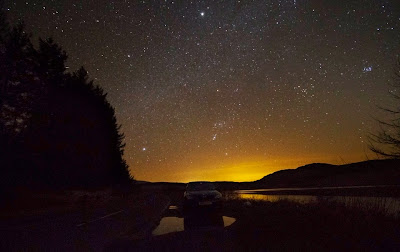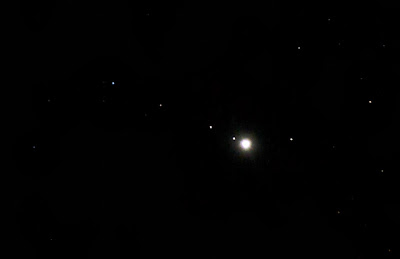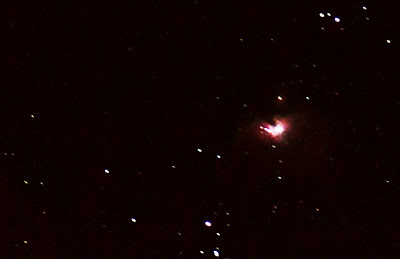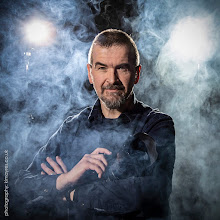Another attempt at photographing stars
Although to be honest, over the past few months of one of the windiest and wettest winters for decades, if not centuries, it's the clear skies bit of that statement which was the rarity.
So I headed out into the Galloway Forest Park with my camera to attempt a little bit of astro-photography, determined to try and capture The Milky Way. I've seen various photos online of it, and they always look spectacular, but I've yet to manage it. In theory it ought to be possible - I have a pretty good camera, and I understand things like f-stops, shutter speeds and ISO settings - but it's always eluded me.
The Galloway Forest Park - only about 20 miles from where I live - is an official "Dark Skies" area, which means light pollution is much lower and you can therefore see many more stars in the sky than elsewhere.
But even with all these advantages, it's still damned difficult to do. The principle problem is in order to allow enough light onto the sensor to create a photo you can see, you have to have the shutter open for a long time - many seconds, perhaps minutes at a time. A tripod is essential because it's impossible to hold the camera steady enough not to cause motion-blur for that long.
However, when the shutter is open for more than a few seconds, the rotation of the Earth means the stars are not in exactly the same place, relative to the camera, by the time the shutter is closed - and this creates "star trails". There are various ways to try and get round this, but all have other disadvantages.
This is all aside from standing around in sub-zero temperatures where you cannot wear thick gloves because you won't be able to press the right buttons to adjust the settings.
One of the other things that becomes noticeable with long exposures is the distant glow of street lights from villages or towns becomes exaggerated, and what you thought was a black sky turns out to be quite orange.
This one shows my car parked at the side of Clatteringshaw's Loch, and I'm guessing the glow is either Creetown or Newton Stewart, which wasn't visible to the naked eye.

click on the image for a larger version
Just above my car, you can make out Orion's Belt - the 3 horizontal stars in a row, and another strip of stars just below it, which is his sword. We'll come back to that shortly.
The bright star near the top of the photo, is Jupiter, and that slightly paler patch of sky running diagonally between Orion's Belt and Jupiter is The Milky Way. But it's nothing like as impressive as I was trying to get.
Eventually I gave up and swapped the wide-angle lens for my 70-200mm zoom lens, which allows me to zoom in closer to the stars. Unfortunately this exaggerates the star-trail effect considerably, however, I did still get a couple of results I was pleased with.
This is Jupiter and I'm pretty certain the wee dots of light off to the left are some of its moons. Which for me, is kind of awesome - these moons are a similar size to our own, but are about half a billion miles away, and yet I'm still able to catch their reflected light in my camera.

click on the image for a larger version
For something even more awesome, we need to return to the sword hanging from Orion's Belt. To the naked eye it looks like 3 or 4 bright stars, but zooming in we can see they are clusters and the middle one is the Orion Nebula. And that is about 1,344 light years away - approx 8 quadrillion miles - 8,000,000,000,000,000 miles

click on the image for a larger version
Now I know there are stunning photos of the Orion Nebula that have come via super powerful telescopes and all I've got to to show are a few reddish pixels, but I didn't use a super powerful telescope and I'm not an astrophysicist. This was me, with my camera - with the same lens I use for taking photos of bands performing on stage at music festivals.
And it gives me a thrill like I was 7 years old again.






Post a Comment